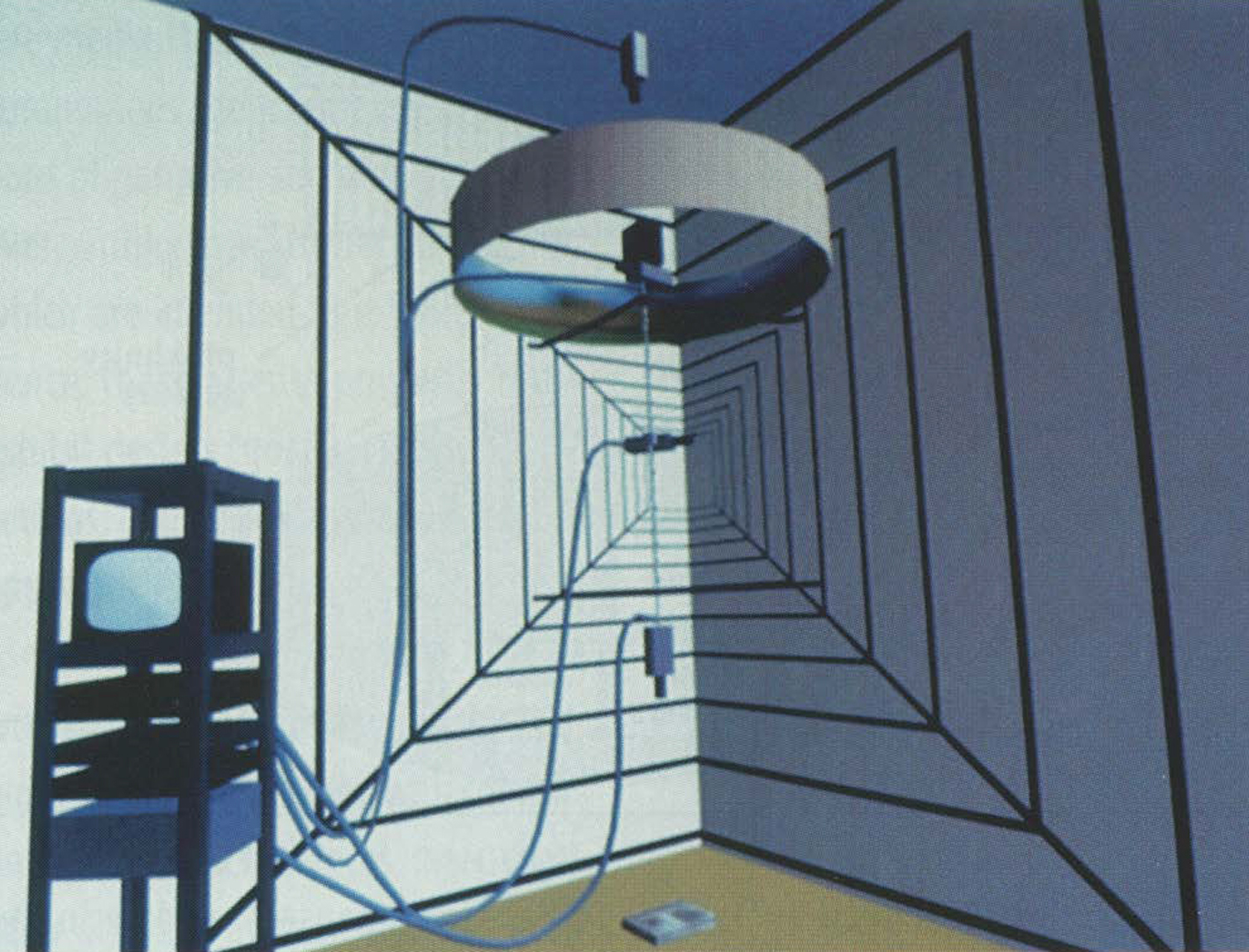Sheldon Brown: The Vorkapitchulator
Artist(s):
Title:
- The Vorkapitchulator
Exhibition:
Category:
Artist Statement:
The Vorkapitchulator is a computer-controlled video installation that is concerned with the construction of cultural conceptions of time and space that have resulted from a century’s immersion into cinematic forms.
The primary element of the piece is a multi-axes, robotic sensing machine (panopticon) that consists of five black and white video cameras permanently mounted onto a large lead screw. The cameras travel along the various axes that this vortex provides, creating a constructed view of spatial events that corresponds to techniques in cinematic narrative montage. This imaging vortex is placed within a space that contains a variety of source material elements to be constructed into the montage, i.e., diorama, multiple objects in various scale sizes, and sampled television imagery.
The displayed television image is then formed by mounting the monitors in an arrangement with half-silvered mirrors, so that several monitors contribute to making one final, virtual image that is projected onto a piece of glass. To view the image the viewer must locate themselves in the environment in such a manor that their presence and position become the significant element in completing the formation of the environment.
The pacing of the piece is under the master narrative control of computersampled broadcast television imagery, whose cut pacing will provide the edits between the various camera views within the piece. In specific television forms, such as soap operas and advertisements, there is a predictable range and distribution of pixel values that when comparatively analyzed over time can be decoded into its specific sequence of shots. It is from this analysis that the sequencing of the camera views will be determined. Through the codification and exteriorization of narrative form, along with the real-time experience of its constructive process, the gain, and loss, of control over time and space relationships is moved into the forefront of consideration. This information is derived by custom-built micro-controllers and software that control the other elements of the piece.
The montage is one of the primary signifiers of cinematic form, expressing both the faceting of space and the plasticity of time. The transitional message of the montage is also of importance, as a larger reading of the piece is about cultural transitions, to an increasing exteriorization of knowledge databases, brought about by the continuing transition into a culture where all conditions are represented in terms of codes.
Thus, the piece explores relationships between the elements of a viewer, their view (manifested as the panopticon), and their cultural domain. The piece identifies the act of viewing as being the significant act in the defining of self, completely embedded in one’s cultural codes, such that the act of viewing and the act of being viewed are the same and the dichotomous relationship between viewer and subject no longer holds as a perceptual paradigm.
The title, The Vorkapitchulator, is derived from Slovko Vorkapitch, a Russian filmmaker who formalized the montage sequence in filmmaking, the vortex of contemporary image culture, and the capitulation to the narrative experience.





